BBL plan to take the league in a bold new direction as crowds drop and interest falls
Expansion could help solve one of the BBL’s biggest problems and is firmly on the agenda for officials. Here’s where the next franchises could be and what’s likely to change for next summer.
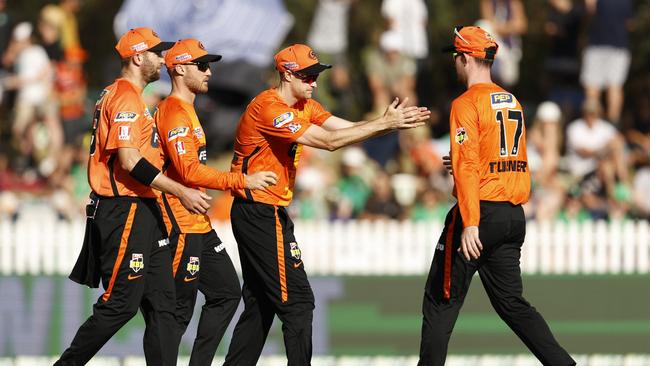
The Big Bash is in for a big shake-up.
After riding a tidal wave of Omicron without ever crashing, the league is determined to set sail in a bold new direction.
Less is more appears to be the theme.
Shortening games is again a key priority after failing to drag the average length of matches under three hours this summer.
Watch The Dettol T20 Series Australia vs Sri Lanka. Every Game Live & On-Demand on Kayo. New to Kayo? Start your free trial now >
The structure of the season is also in play, with two years remaining on the $1.2 billion broadcast deal.
The 14-round home-and-away season has been the major bugbear for players and fans alike over the past four years.
What about expansion?
Could season 12 be the first time the BBL seriously considers growing beyond eight clubs?
“We’re in a phase of the comp now where we have to be as bold as the people who created the competition in the first place,” Alistair Dobson, the big boss of the Big Bash, told News Corp.
Empty stands might have a long term impact on viewers though? It certainly stands out..
— Joshua Lalor (@JoshuaLalor) January 10, 2022
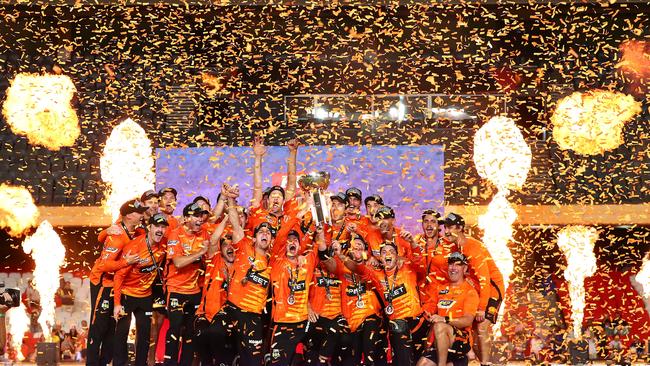
“There were lots of risks and leaps of faith that at the time people thought were crazy ideas.
“We have to re-imagine that level of courage and ambition from the people that brought it to life in the first place.”
Brisbane Heat star Chris Lynn flagged Gold Coast as a likely candidate, although the glitter strip has long been a graveyard for many sporting clubs.
Canberra, blessed with a great venue and fans who keep rocking up, appears the most natural fit.
Far North Queensland, Geelong and a second team in Western Australia, as well as Gold Coast, would all be in the mix should an economic analysis be completed.
But it might be time to wave bye-bye to the Bash Boost bonus point and the rarely-used X-Factor substitute.
League boffins now have two seasons of data on the three radical rule changes they unleashed in BBL10.
“The power surge is here to stay,” Dobson declared.
“We’re more open to those ones (Bash Boost and X-Factor) not necessarily continuing, but always open to new ideas.”
The length of the season is the big one.
The BBL was at its sparkling best six years ago, when fans turned the TV on every night knowing a meaningful match would brighten up their living rooms, the thrills often lasting under the final ball.
Next years MBBL should be 8 rds played on a Fri/Sat/Sun with 1 rd each weekend. T20 WC in October will create a lot of content before BB so lets make each game an event with big build ups/story lines/crowds similar to the winter codes. Would also allow some mid week shield games.
— Joe Burns (@joeburns441) January 12, 2022
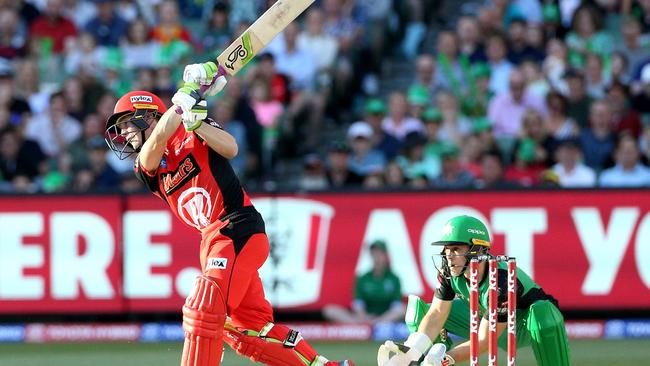
The magic started to fade as it exploded from eight to 10 to 14 games in consecutive seasons.
“It’s obviously one of the key discussion points,” Dobson said.
“Firstly, it’s understanding what role a 14-game season plays not only in broadcast, but what that scale allows the rest of cricket to do.
“Invest in things, community cricket and obviously there‘s been great growth in women’s cricket and being able to leverage your strong assets like the BBL to drive outcomes in other areas.
“We certainly hear the commentary around the length of the season and the number of games. We played 56 games, but some people forget the season was only 46 days long.
“This year was a little bit longer than we like on the basis that we had five Ashes Tests to squeeze around.”
The existing TV deal has long been seen as the reason why the BBL can’t afford to shrink before 2024-2025.
“With the season now finished we go into a lengthy review process with all our key stakeholders to determine what the best-looking BBL for the future will look like,” Dobson said.
“Whether it’s a rule change or the structure of a season or contracting rules it requires a fair bit of consultation.
“But it’s never as simple as one stakeholder making a decision.”
Dobson wouldn’t be drawn on whether playing less games would force Cricket Australia to accept less cash from broadcasters.
They purchased 56 home-and-away games. Should they receive a discount if there are only 40?
When the AFL condensed its 2020 season it extended the TV deal, taking less cash but spreading it over multiple years.
One factor largely out of Cricket Australia’s control is the quality of cricket.
Stars coach David Hussey said the Bash Boost didn’t help, with his team skittled for 61 in the season-opener because they collapsed going after the bonus point.
But this summer was littered with one-sided games that had fans turning off regardless of the rules.
Teams batting first won 63 per cent of games, which was the highest since BBL01.
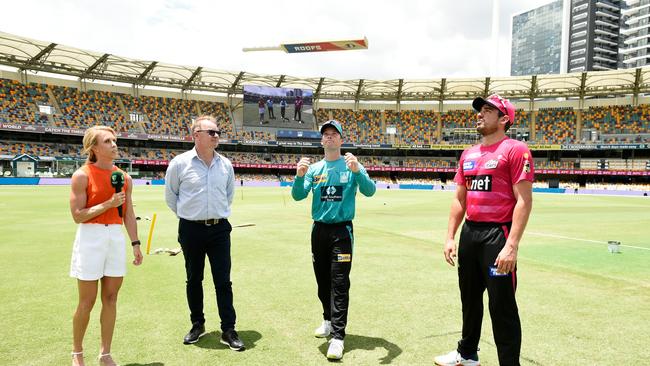
There were only four run chases greater than 155 and none over 177.
Records were set for the most centuries (six) and most 200-plus scores in first innings, while 13 clubs posted targets over 190.
Great for batsmen. But it was to the detriment of the chase.
The best result for TV is a run chase of 160 that goes to the final over – think Sydney Sixers’ drama-packed Challenger Final victory over Adelaide Strikers, as Jordan Silk retired hurt twice and Hayden Kerr clubbed the winning runs.
That was after 10.30pm, past bedtime for many young fans.
“One thing we didn’t solve this year is the length of the game, we’ll keep working on that,” Dobson said.
“We’ll probably get pretty funky on how we want to address that.
“The ambition is to drag it back under three hours. That’s going to take some meaningful change, whether it’s rules or governance.”
The scheduled running time is 2hr 55min. But the average time for the BBL was 3hr 15min, and plenty of games ran 3hr 30min.
It’s too long for T20 cricket.
Covid killed the overseas player draft for the past two years, but that is finally on track for next season.
In fact, last June the BBL was charging towards a season of excitement with plans for DRS and the draft before NSW and Victoria were plunged into another virus crisis.
“We’re still largely working on similar contracting rules as there were from the start of the BBL. Clearly the landscape has changed a bit,” Dobson said.
“I’m a fan of the draft, I’m pretty clear on that. Ultimately, even if we only end up with the same players, we’ll still be better.
“You’re bringing them in with a bit more profile, you’re building them up, and you’re adding interest to the comp and creating some drama and theatre – all things we’ve probably missed in the last couple of years.”
The Steve Smith finals fiasco also had a silver lining for the BBL team.
Good luck to the @SixersBBL in the Big bash final tonight and also to the Italian import Stephano making his debut 😂 pic.twitter.com/aVsARhkhIJ
— Steve Smith (@stevesmith49) January 28, 2022
“It prompted a discussion that we‘ve been wanting to have around how we align Test players to a BBL club to make sure that when they are available they can play,” Dobson said.
“But also in a way that‘s transparent and kind of a level playing field for clubs.
“Some clubs carry Australian players on their books and in their salary cap at the expense of other parts of the list, and some clubs don’t.
“That’s all part of the strategy. Ultimately, if there’s an Australian player that wants to play in the BBL they should be able to.
“But it also needs to be in a way that is very transparent and free and equitable for all teams.”
Boosting the $1.95 million salary cap is “on the agenda”, particularly splashing more cash to attract the world’s best players.
“The reality is that our salary cap as it stands right now only enables a certain level of overseas player recruitment and contracting, on the basis that the global market for the big name overseas players has changed a lot in the last three or four or five years with the emergence of all these additional competitions, which means players from around the world have got lots of options of where they want to go,” Dobson said.
“How do we optimise a salary cap for that? And how do we align Australian players with a BBL team, but in the context of salary cap space?”
A third season impacted by coronavirus is also expected.
“It seems like we’ll still be dealing with something,” Dobson said.
“Even the experts are saying it’s got 12 months or more left in it, but it’s going to gradually become something you deal with.
“Clearly, the footy codes will again be a test case for us. But our planning will be on the basis that we’ll be back to normal and then you adapt as you go.”
HOW THE BBL SURVIVED THE STRAIN OF Covid
When the Big Bash League’s Covid war room met on January 10 the tournament appeared doomed.
Health updates logged by club doctors on a centralised system showed the four clubs set to play a double-header at GMHBA Stadium that day had been wiped overnight.
“They all had multiple red flags, like 10 players on each team had respiratory symptoms,” BBL general manager Alistair Dobson told News Corp.
“We’re going, ‘OK, something's not right here’. There’s three options.
“Someone’s pranking us and the players have got together and decided to have a bit of fun, which would be unlikely, or we are genuinely about to fall over because all four teams are gone.
“Or there’s a software glitch. Thankfully, it turned out to be the last.”
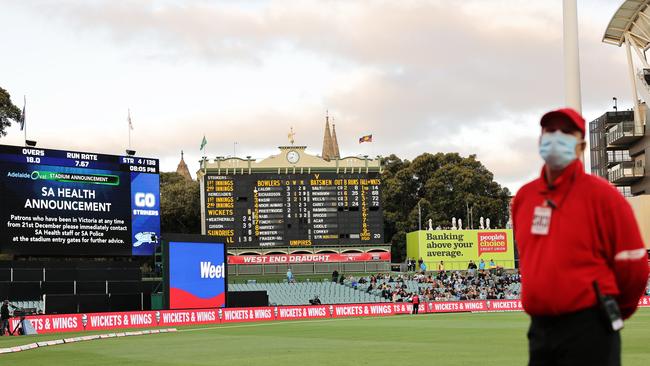
Melbourne Renegades’ sick list included Test player Marcus Harris in a clue the snap diagnosis was off the mark.
But BBL competition support specialist Krystal Davie called each club and made their doctors go and speak with every single player to confirm it was only the software that had a virus.
Davie also whisked the entire pool of replacement players to Geelong, where they remained until the start of the second match.
They were ready to sub-in at the sight of a runny nose after a nightmare fortnight where more than 40 BBL players contracted Covid.
Entire clubs were soon placed on standby as contingencies became compulsory.
“We’d contact relevant clubs each night and go, ‘We need you guys to be ready to go tomorrow’,” Dobson said.
“In other words, don’t go playing golf at 8am. We’ll call you by 11am and tell you that you can stand down and go and play golf or whatever.”
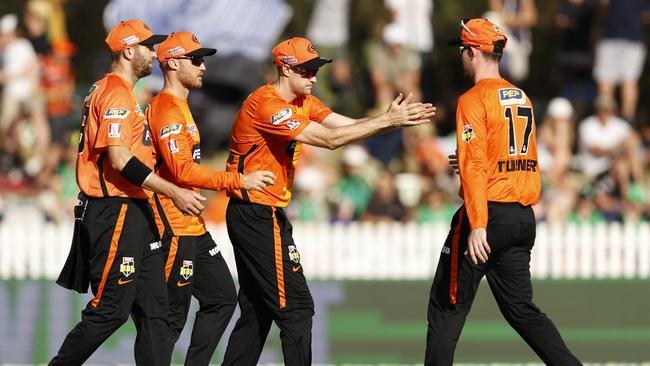
THE “OLD WORLD”
One game into the quest to complete 120 men’s and women’s BBL matches and Tasmania enforced a snap lockdown.
It was the only state prepared to house all eight clubs for the first 20 WBBL matches back in October when it was “easier to get players in from overseas than it was to get them out of NSW”.
But a weekend of double-headers was under threat because a NSW man illegally flew south and escaped from hotel quarantine.
One of the BBL’s government experts heard a whisper the lockdown was coming, granting Dobson’s team 12 hours to craft an exemption to play proposal.
“Every club had to submit name by name who’s allowed in,” Dobson said.
“At 4am we’re going through the guestlist – we know they’re going to need it at 8am.
“Videographer – not required, can’t come. Sous-chef – don’t need that.”
Amazing scenes 😂
— 7Cricket (@7Cricket) January 11, 2022
This 'COVID-safe' wicket celebration from Haris Rauf is 10/10 #BBL11pic.twitter.com/OKEjLsVBUi
BBL broadcast staffer Ed Whitchurch had to source the vaccination status of dozens of cameramen while global supply chain issues meant boxes of the WBBL’s new Nike kits almost didn’t make the first game.
It could’ve been worse.
The hotel quarantine escapee landed at Hobart airport shortly after the WBBL’s international stars, leaving the likes of Meg Lanning just 30 minutes away from touching down in a hotspot.
“They were the easy days, when we were only worrying about government exemptions,” Dobson said.
THE “NEW WORLD”
The “Old World” battles of closed borders, travel exemptions and lockdowns rapidly morphed into the “New World” of infection control on December 30, when the virus swept through Melbourne Stars.
You can be exempt from borders – but not from Covid.
BBL operations boss Belinda Keay urged Dobson to dial out of a Cricket Australia executives meeting and into the daily Covid war room call when it was revealed the Stars had one symptomatic case.
Their 7.15pm game against Perth Scorchers that night was postponed at 5pm, ending a 205-game streak of matches played without interruption since the pandemic began.
It was the last resort. The BBL fixture wraps around the Test summer, leaving scarcely any vacant timeslots.
“Every game you postpone now means every other game is harder to postpone,” Dobson said.
“So you’re trying to keep as much oxygen in the last two weeks of the season knowing we might have heaps of games moving.”
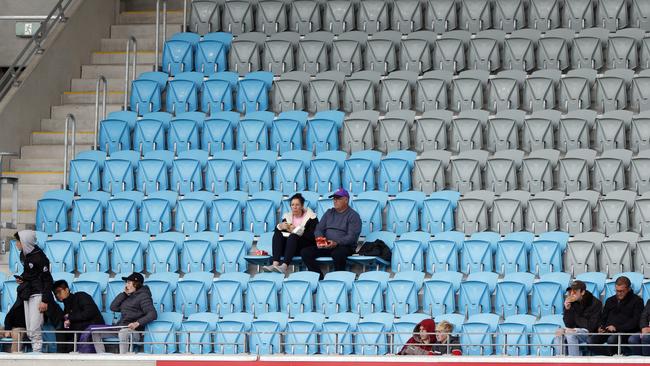
A sleepless night followed.
“Have we just haven‘t pulled the trigger too early?” Dobson said.
“If we wake up in the morning and there‘s only one or two cases you could’ve rolled the dice.”
The Stars camp returned 15 positives … as Sydney Thunder, playing at Adelaide Oval that night, recorded four of its own.
“That basically started the daily process of every morning going, ‘Can we play tonight’s game?’”
That match went ahead with changerooms and high fives avoided, marking the halfway mark of the season.
“You just had to assume everyone had it by that point,” Dobson said.
The sick Stars were stuck in isolation with two games scheduled in the next three days, creating a headache that didn’t require a rapid test.
Dobson was due to drive a rental car to Coffs Harbour on January 1 for that night’s Sixers-Renegades match.
He couldn’t find 10 minutes away from his phone to collect the keys.
Five check-ins for a flight home instead were also aborted to answer emergency calls as Gold Coast’s terminal became the BBL’s head office for a day.
“The tsunami has hit and you’re starting to build boats trying to keep afloat,” Dobson said.
As Stars general manager Blair Crouch phoned premier cricket clubs searching for players, Dobson asked three clubs whether they would fly to Melbourne and sub-in against Renegades at the MCG as a back-up plan.
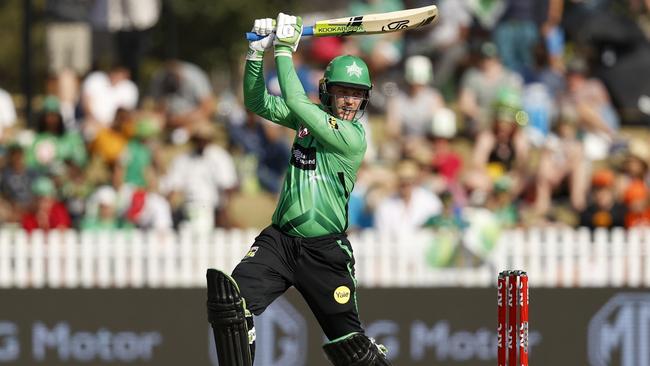
“The bit we weren’t prepared for was at that point premier cricket was off,” Dobson said.
“It was Christmas break and so we were trying to ring blokes, but they were at the beach or at the pub or haven’t picked up a cricket bat in 10 days.
“So we said, ‘OK, we have to contract these players, we’ll just pay them to be ready and bring them into the hub.
“We paid each team to host one or two players, so they’d travel with the Scorchers or with the Stars, but were available for everyone.
“That essentially created 16-odd players across all the disciplines, so if you lose a keeper there are two keepers to choose from.”
THREE-POINT PLAN
After the Stars’ cluster swelled to 21 and Brisbane Heat lost 12 men in one round of PCR tests a three-point plan was implemented to finish the season.
That pool of replacements formed one part, along with consolidating all eight clubs in Melbourne and locking everyone inside mini bubbles.
The bubbles were capped at three, strategically chosen – three fast bowlers wouldn’t link-up – and included officials.
“You never want anyone to catch Covid, but teams had big enough squads to cope with three people going down, so you could only ever hang out with those three people,” Dobson said.
“You had to travel to training, you had to go out for coffee and you could only exist within that group of three.
“That’s what the players found the hardest, and fair enough because they’d only see everyone else at training.”
Spinner Shadab Khan wasn’t allowed into Queensland with Sydney Sixers because he hadn’t been in Australia for 14 days.
So he and Sixers media manager Dave Lyall bubbled-up in Tweed Heads, enjoying Halal Snack Packs and a visit to the local nets each day.
Lyall drove over the border for games at Metricon Stadium and Khan reunited with the team in Coffs Harbour.
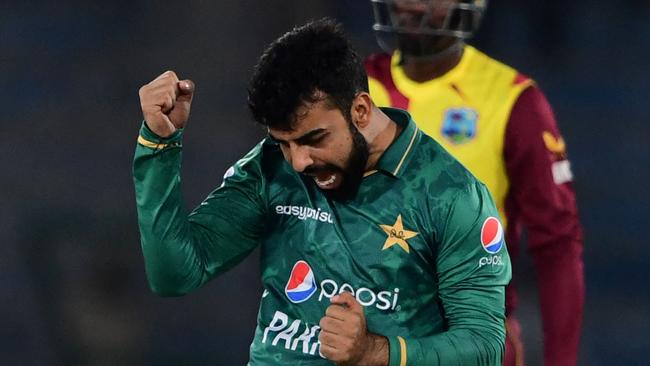
THE SECRET SAVIOURS
The BBL wasn’t saved by swish executives seated around the board table.
It was a small team of frontline workers and medicos who rolled their sleeves up, much like Lyall and Crouch at club land.
Phil Rigby, the BBL’s senior league development and growth manager, dropped his commercial duties to become the full-time chartered flights man when commercial planes and public airports were banished.
Fixture king Andrew Verstoep spoke to Dobson up to five times a day about blockages in a schedule that was being redrawn on the run.
“There were times we wanted to play a game at the MCG one day and a game at Marvel Stadium the next, and as simple as that sounds you can’t do it because they haven’t got enough (TV) trucks,” Dobson said.
Head of sports science Alex Kountouris advised on the Covid protocols, particularly when requests were made by players and clubs.
“This player has got a need to go home for a couple of nights – as cold as it sounds, you‘re trying to also establish is that risk worth taking?” Dobson said.
“Every time a player stepped outside a bubble you were a chance they’d step back in with (Covid).”
At 7.15pm each night Dobson would put his phone down, crack a beer and tick another game off his spreadsheet.
Cases kept “bubbling away” at Sixers and Scorchers without ever taking them down, and 10,392 attended their final at Marvel Stadium as thunderstorms hit Melbourne.
No games were lost, only three were postponed and the season finished on time. The A-League, NBL and AFLW are still navigating that minefield.
“The achievement is remarkable. It’s a minor miracle the season was completed on time.”





To join the conversation, please log in. Don't have an account? Register
Join the conversation, you are commenting as Logout